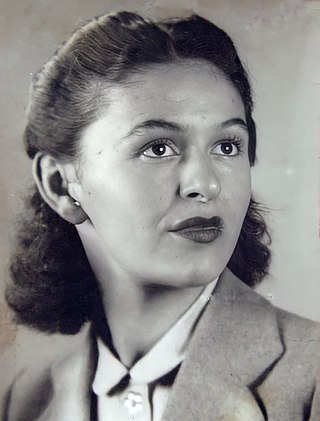Contents
- Photographers from Albania
- Photographers from Kosovo
- Photographers from North Macedonia
- Albanian-American Photographers
- References
| Part of a series on |
| Albanians |
|---|
 |
| Part of a series on |
| Albanians |
|---|
 |

The film industry in Albania comprises the art of films and movies made within the country or by Albanian directors abroad. Albania has had an active cinema industry since 1897 and began strong activities in 1940 after the foundation of both the "Kinostudio Shqipëria e Re" and National Center of Cinematography in Tirana.

Nikoll Idromeno, better known as Kolë Idromeno, was an Albanian painter, sculptor, architect, photographer, cinematographer, composer and engineer during the Albanian Renaissance in the nineteenth century. He is widely regarded as a precursor of both realism and landscape art in Albania.

Kujtim Çashku is an Albanian film director and screenwriter who has won numerous awards at international film festivals, including the Critics Prize at the 1996 Bastia Mediterranean Film Festival and the UNESCO Award at the 1998 Venice Film Festival for Colonel Bunker, the Best Screenplay Award, the FIRESCI Prize and the Silver Pyramid at the 2005 Cairo International Film Festival as well as the Bronze Palm at the Valencia Festival of Mediterranean Cinema for The Magic Eye, and the CEI Award at the Trieste Film Festival for his "brave commitment to the development of Albanian cinema". He is the founder and director of Tirana's Marubi Film & Multimedia School, the first film university in Albania, as well as the supervisor of OraFilm, Albania's first film production company, and founder-organizer of Albania's first Human Rights Film Festival (IHRFFA).

Kel Kodheli was an Albanian photographer. He was the father of Geg Marubi.

Pietro Marubi was an Italian painter, sculptor, architect and photographer and founder of the Marubi studio who spent most of his life in Sanjak of Shkodër, today Albania. Pietro was born in Piacenza, Italy in 1834, in a period of revolution for Europe. In 1856, Marubi was forced to leave Italy because of his participation in the Garibaldi movement, he moved to Shkodër, where he opened the first photography studio, which was named Dritëshkronja.

Hamza agë Kazazi also known as Hamz Kazazi (1779–1859) was an Albanian fighter and leader, known for his role in Albanian Uprising of 1835 in Shkodër, back then the center of Pashalik of Scutari of the Ottoman Empire. He had an only son called Tahir Hamze Kazazi. He is also known as the first Albanian to be photographed by Pietro Marubi.

Llazi Sërbo was an Albanian actor.

The Ministry of Economy, Culture and Innovation is a department of the Albanian Government responsible for the implementation of economic, cultural affairs and innovation. Blendi Gonxhja is the minister serving since January 2024.

Adriatik Hotel is a hotel near Durrës, Albania. This is the main tourist hotel in Durrës, located on the long sandy beach to the south. It contains 70 rooms and was built during the Stalin era. An early reference to the facilities is contained in an article written for The Atlantic in 1963 by journalist James Cameron. By the time Philip Ward, author of Albania: A Travel Guide, visited in 1982 each bedroom was en suite but was still basic. The hotel was extensively renovated in 2003 and now features the best swimming pool in the country.

Geg Marubi was an Albanian photographer and son of Kel Marubi. He was the last photographer of his family and is regarded as one of the most prominent Balkan photographers of his generation.
Gege may refer to:

The "Honour of the Nation" Decoration is the highest decoration to be given in Albania, among the Civil awards and decorations of Albania, and was instituted by special law No. 8113, of 28 March 1996, entitled Për dekoratat në Republikën e Shqipërisë, later amended by law No. 112/2013 Për dekoratat, titujt e nderit, medaljet dhe titujt vendorë të nderit në Republikën e Shqipërisë.

Marubi National Museum of Photography , also known as Marubi Museum, is a museum in Shkodër, Albania.
The Marubi Palace Gardens Range Rear Lighthouse is located in the Marubi Palace Gardens in Stone Town, Zanzibar, Tanzania. The lighthouse is located to support ships trying to dock at the Stone Town harbor.

Injac Zamputi was an Albanian scholar, writer, and historian.

Shkodër is the fifth-most-populous city of the Republic of Albania and the seat of Shkodër County and Shkodër Municipality. Shkodra has been continuously inhabited since the Early Bronze Age, and has roughly 2,200 years of recorded history. The city sprawls across the Plain of Mbishkodra between the southern part of Lake Shkodër and the foothills of the Albanian Alps on the banks of the Buna, Drin and Kir rivers. Due to its proximity to the Adriatic Sea, Shkodër is affected by a seasonal Mediterranean climate with continental influences.

The history of photography in Albania begins with the Marubi Dynasty and its founder Pietro Marubi (1834–1903), who settled in the northwestern city of Shkodër from Piacenza, Italy during the second half of the nineteenth century and opened the first photography studio there in 1858. Having no children of his own, Marubi's first assistants and faithful successors were Mati and Kel Kodheli, the sons of his gardener Rrok Kodheli. Pietro sent Mati, the elder of the two brothers, to study photography at the Sebastianutti & Benque studio in Trieste. When Mati died prematurely at age nineteen, in 1881, Pietro adopted Kel, whom he also sent to Italy to study and who would later assume the surname Marubi. Upon Pietro's death in 1903, Kel inherited his adopted father's studio and continued its work. He, in turn, was followed into business by his own son, Geg Marubi, who studied photography and cinematography in France at the Lumière brothers’ studio.

Mati Kodheli (1862–1881) was an ethnically Albanian photographer in the Ottoman Empire who served as an apprentice to master photographer Pietro Marubi. He was the older brother of Kel Kodheli.